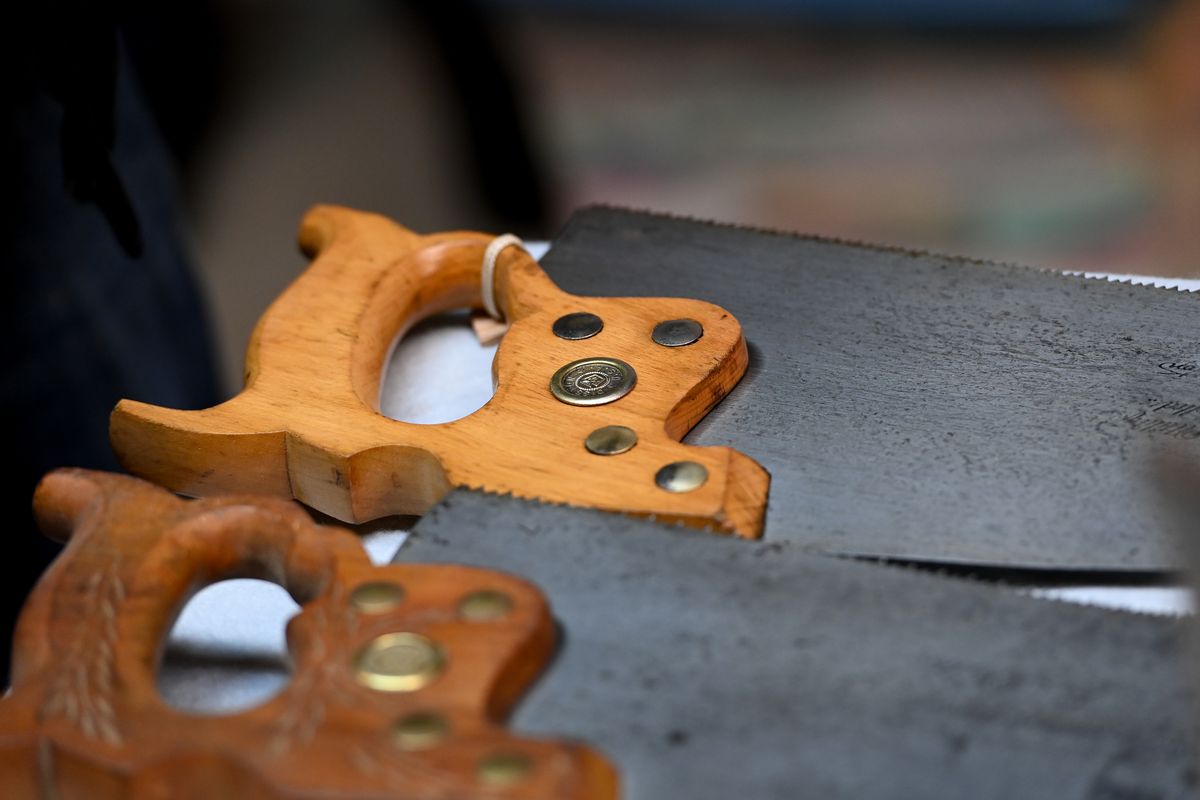The Collector: Dan Roos

Long before the advent of power tools, carpenters and builders depended on sturdy, well-made handsaws to cut lumber and trim boards.
Dan Roos cut his teeth, so to speak, on the razor-sharp reliability of such tools. His appreciation of their craftsmanship led to his collection of more than 100 handsaws.
“My dad was a carpenter,” said Roos. “When the Cabinet Gorge Dam was being built (1951-1952) on the Clark Fork River, he and another guy sharpened all the saws they used on the dam.”
After a stint in the Air Force from 1958 to 1962, Roos served a four-year apprenticeship with the United Brotherhood of Carpenters and Joiners of America.
The union held an apprentice competition in the old Spokane Coliseum and Roos took second place.
“My dad gave me some handsaws and a few tools to start with,” Roos recalled. “I did commercial work for a long time. I worked for Boise Cascade, then went into house-building with a friend. Eventually, I sold building materials before retiring.”
His collection began in earnest when he retired 17 years ago.
“At one time, hundreds of companies made handsaws,” said Roos. “Now there’s just a few.”
Disston Saw Works was one of the most well-known U.S. manufacturers. Founded in 1840, the once family-owned company has been sold several times and no longer makes handsaws.
Roos owns several Disston saws.
“You can date them by their medallions,” he explained.
Each Disston saw has a metal medallion embedded in the handle, and each blade is stamped with the founder’s name.
In his Spokane Valley garage, Roos showed an example of the craftsmanship the company was known for.
“This D-12 is one of the most expensive saws ever made,” he said.
Its applewood handle is etched with wheat sheaves and the blade features the highest quality steel.
Roos scours pawn shops and garage sales to find his treasures.
“I bought one at a yard sale for $3 or $4,” he recalled. “It looked brand new – no rust!”
Usually, Roos spends quite a bit of time restoring the tools to their former glory. He takes the handles off and cleans them.
“I might do a different lacquer or varnish or use linseed oil,” he said.
He carefully sands the blades with emerald paper, and if they’re really rusty, he soaks them in vinegar. Then he reassembles them and takes them to Inland Saw and Equipment to be sharpened.
“Older saws were made to be sharpened,” Roos explained.
While he lets the professionals do most of that work, he does have an old-fashioned sharpening jig bolted to a table.
“There was pride in the workmanship,” he said, as he demonstrated how the jig works. “We were taught to respect our tools.”
Roos’ collection includes crosscut and ripsaws, panel saws that were made to fit in toolboxes and backsaws with steel backs. You can tell the newer tools because they have plastic handles. In addition, some came with metal handles.
“The metal handle is durable, but I prefer to work with a wood handle.”
Like most collectors, he doesn’t consider his collection complete.
“I’d like to find some really old ones–like from the 1800s,” he said.
For him the allure is simple.
“They’re old and I hate to see them being dumped,” Roos said. “I like restoring them to what they were intended to be. It’s preserving the past.”